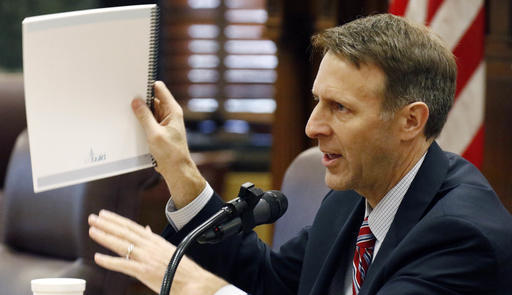

JACKSON, Mississippi (AP) — Lost in the debate over how much the state of Mississippi should spend on schools this year is an equally important question: How much should the state be expected to spend on schools in future years?
The current school funding formula is adjusted every year to account for inflation and is recalculated every four years to cover changing costs.
But Gov. Phil Bryant, Lt. Gov. Tate Reeves and other Republicans have said any new formula shouldn’t be automatically recalculated, instead leaving lawmakers more discretion over spending. Bryant said Monday there should be no requirement to fully fund the amount, even though lawmakers ignore it now.
Reeves said other state agencies don’t benefit from automatic increases in budget recommendations.
“There’s not a predictable inflation rate in the lieutenant governor’s office, now should there be,” Reeves told The Associated Press on Friday.
That could mean the level of funding falls behind inflation over time, even if it grows in current dollars. That could even be true if lawmakers adopt recommendations put forth by the nonprofit group EdBuild to increase the amount of state spending by $75 million. That’s a 3.3 percent increase, but if it’s phased in over a number of years, that could be overtaken by inflation. The consumer price index rose by an average of 1.4 percent in each of the last five years, according to the U.S. Labor Department.
Mississippi’s spending has lagged inflation since 2008, the last time lawmakers fully funded the current Mississippi Adequate Education Program. In real terms, formula spending is 12 percent lower than at 2008’s peak.
Parents Campaign Executive Director Nancy Loome said that even though lawmakers are ignoring a law requiring full funding, recalculation remains key. Her group seeks higher state spending on education.
“We don’t need to look at it for the 2015-2016 school year and say that’s good forever,” Loome said. “That will be out of date next year.”
Today’s formula is recalculated every four years, using costs of C-rated school districts to determine how much schools need to provide a midlevel education. In intervening years, the formula is adjusted for inflation. If state and local spending rises, the cost mandated by the formula can increase, too. But if spending falls, the formula can decrease. A preliminary calculation dipped by $28 million in 2013 after cuts during the recession.
Removing any recalculation requirement could end a political headache for Republicans. Democrats have routinely attacked them for underfunding the formula in recent years.
“They would take off the books any requirement that the state ever fund education at any objective level,” Sen. Hob Bryan, D-Amory, said Friday.
Reeves, though, says he’s not opposed to additional money if it’s spend efficiently. EdBuild’s recommendations on deciding future spending levels revolve around evaluating the effectiveness of spending before deciding if more money is needed.




Be the first to comment